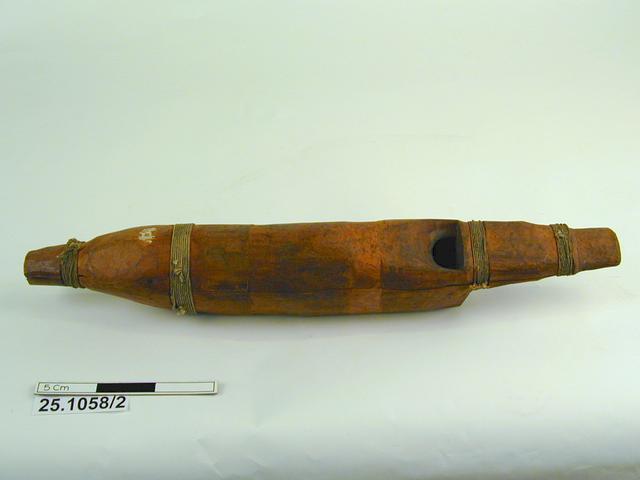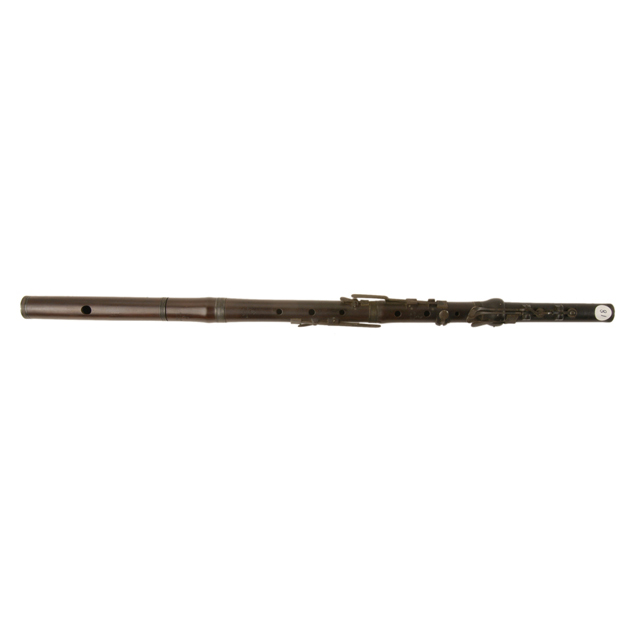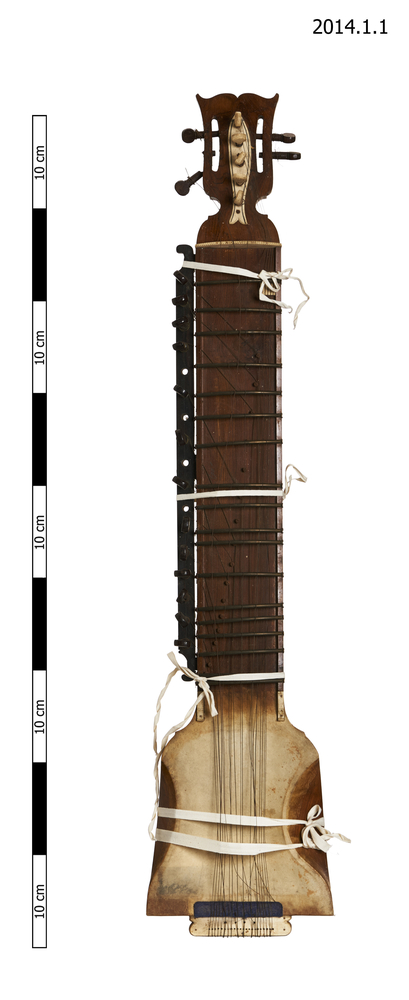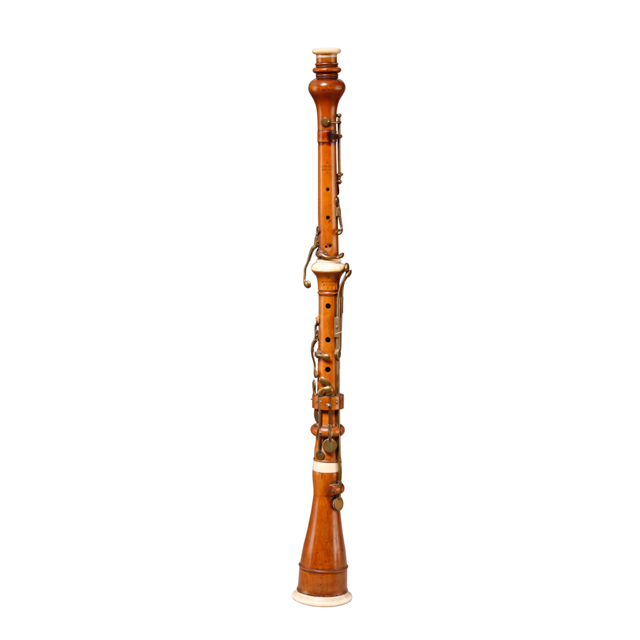
Three holed nose flute of bamboo which is closed at the top and open at the bottom. The holes have been obliquely drilled through the shaft using a European drill bit and the entire surface is decorated with a tessellating design of flattened hexagons rendered using a metal stylus to puncture in dotted lines.
Nose Flute, Kofe, Niue, Western Polynesia The culture of Niue is not as well-known as that of its larger neighbours in Western Polynesia, although it was rich and distinctive. All the societies of Western Polynesia share a common ancestry, however, and so it is no surprise to find nose-played flutes here as well as in neighbouring Tonga, Fiji and elsewhere. Niuean nose-flutes were among the smallest in Polynesia: delicate little bamboo pipes with a high pitched range of notes. This example is a three-hole version, played by placing the nostril over the top hole, just below the closed end. Unlike other West Polynesian nose flutes, however, those of Niue were open at the lower end, and more similar to flutes made further east, such as those of distant Hawaii. Such flutes were played recreationally alongside slit drums (lali) to accompany narrative songs and chants (lologo), and were also played one-handed by female clowns whilst dancing during their comic performances. Bamboo. Mid-19th Century. Purchased by the Museum from the Berkeley Gallery in October 1960.






